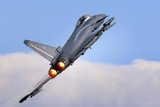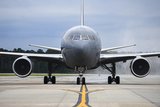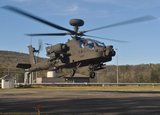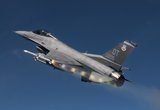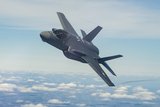Boeing looks to expand autonomous aircraft inspection system
The Skydio UAS and Boeing systems have been used to conduct aircraft inspections. (Photo: Boeing)
Boeing has been looking to trial its Boeing Automated Damage Detection Software (BADDS) and UAS system on more aircraft including those embarked on moving ships, Shephard has learned. The company has been evaluating the possible use of BADDS and UAS to inspect ships.
Trials have taken place with Skydio’s X10D and a Near Earth Autonomy (NEA) platform which involved the UAS carrying out and recording an inspection of an aircraft’s surfaces. The information was then run through BADDS and its algorithms.
Scott Belanger, capabilities integration team lead for Boeing Global Services, said the company’s Autonomous Aircraft Inspection (AAI) programme had seen UAS flown
Already have an account? Log in
Want to keep reading this article?
More from Farnborough Airshow 2024 (FIA2024) | View all news
-
![Eurofighter looks to fly integrated new systems in Typhoon next year]()
Eurofighter looks to fly integrated new systems in Typhoon next year
The first representative Eurofighter Typhoon flew in 1994 and entered operational service in 2003. Two decades later the company is working to ensure the platform’s relevance beyond the middle of the century.
-
![Embraer KC-390 puts on a show for the Mexican Air Force]()
Embraer KC-390 puts on a show for the Mexican Air Force
The KC-390 demonstrator was en route to Brazil after a display at the Farnborough Airshow in the UK.
-
![Israeli Air Force to receive first KC-46A aerial refuelling aircraft in May 2025]()
Israeli Air Force to receive first KC-46A aerial refuelling aircraft in May 2025
The delivery would mark an end to long delays in the programme with additional aircraft expected through to 2027.
-
![Boeing says next stage of Poland Apache deal is close and Chinook may be next]()
Boeing says next stage of Poland Apache deal is close and Chinook may be next
Boeing has seen a renewed demand for the Apache attack helicopter with Poland and Australia becoming customers, while India, the UK, the US, the Netherlands and Egypt have also bought new aircraft or upgraded platforms.
-
![Defence leaders call for strengthened supply chains and highlight security risks at Farnborough]()
Defence leaders call for strengthened supply chains and highlight security risks at Farnborough
Under mostly clear skies, a couple of showers and the roar of the newest variant of Boeing’s venerable F-15, there was a lot of talk at Farnborough International Airshow 2024 about how to make supply chains stronger in the face of high demands and a lingering post-Covid pandemic effect.
-
![Greece joins the F-35 Lightning II world alliance]()
Greece joins the F-35 Lightning II world alliance
Greece has signed an offer for 20 F-35 aircraft with an option on 20 more platforms.










